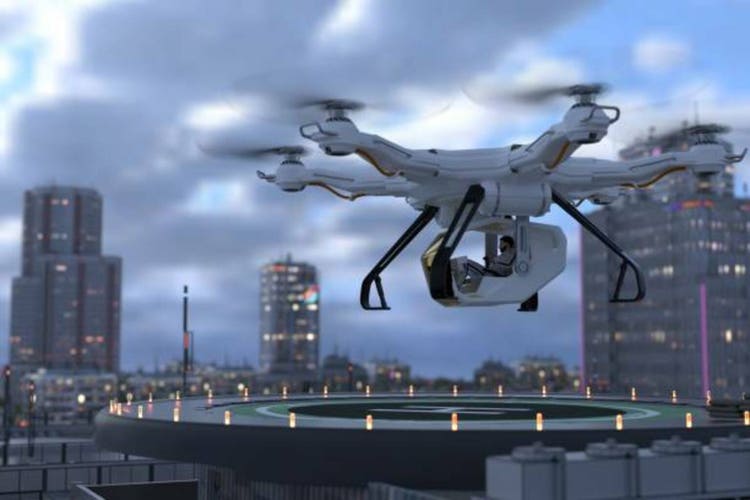At about 2,000 years old, the “Ship of Theseus” puzzle still feels resonant: if every part of a ship is replaced, is it still the same ship? The modern U.S. Navy faces the reverse dilemma—what happens when decades pass and the world has changed, but the ship remains essentially the same?
The U.S. builds “the best warships in the world,” said Rylan Hamilton, CEO and cofounder of autonomous vessel startup Blue Water Autonomy. “They can get hit by a missile, and still operate and survive. But to get there, we’ve built up layers and layers of requirements based on almost 100 years of lessons operating ships at sea. And these layers of requirements make it really difficult to adopt modern technology. If you go on any ship today, some of the equipment looks like it was designed and built over 40 years ago.”
The Navy, like much of the broader U.S. military, is at a crossroads—the technology that service members rely on in the field is often less connected, less flexible, and in many cases less advanced than the underlying technology they use when they’re at home with their families, catching Ubers and ordering packages on Amazon. Around this problem, a boom in defense tech has flourished: Between 2021 and 2023, VCs poured nearly $100 billion into defense tech, a 40% leap as compared to the seven years before put together.
Hamilton, a third-generation Navy man, is uniquely positioned for the defense tech revolution. He spent his first four years out of college on an amphibious transport ship hunting for mines in the northern Persian Gulf during Operation Iraqi Freedom, and then on a frigate in the Pacific, chasing drug smugglers. After spending 15 years in robotics startups, Hamilton came full circle—after selling robotics company 6 River Systems for $450 million in 2019, he ultimately cofounded Blue Water in 2024 with Austin Gray and Scott N. Miller. Their mission: To build autonomous, unmanned ships, with one first customer in mind, the Navy.
As it barrels towards launching a prototype next year, and with Navy R&D contracts in hand, Blue Water has raised a $50 million Series A, led by GV, Fortune has exclusively learned. Eclipse Ventures, Riot, and Impatient Ventures, all existing investors, participated in the round, bringing the company’s total capital raised so far to $64 million.
“If you were to ask ‘Where will the greatest amount of defense spending in the U.S. happen over the next decade?’—it’s naval open ocean investment in autonomy,” said Dave Munichiello, GV managing partner and himself an Air Force veteran, citing the recently passed Big Beautiful Bill, as well as conversations with former and current military folks. (Munichiello first met when both were working at Kiva Systems, famously acquired by Amazon.) “This isn’t just about a massive market, it’s about influencing U.S. strategy,” he said.
The U.S.’s shipbuilding dominance has historically given the country a big geopolitical advantage, Munichiello said. But that advantage has been eroding, particularly against the backdrop of soaring tensions with China. The U.S. Office of Naval Intelligence reportedly estimates China now has more than 200 times the shipbuilding capacity of the U.S. It’s a jarring prospect. As Roy Kitchener, retired Navy Vice Admiral and Blue Water advisor, pointed out: In the event of a Taiwan invasion, improved tech and autonomous vessels would by all accounts be key to any U.S. defense.
“Of course nobody wants to go into a minefield with a ship,” said Kitchener, who served as commander of the Naval Surface Forces for both the Atlantic and Pacific Fleets. “It’s very difficult to find things using sonar—when you go looking for mines, everything growing or thrown into the ocean can look like a mine. But when you apply AI target recognition, you can go from 800 mine-like objects to 50. It’s these kinds of unique problem sets, smaller tactical problems, that startups have been very good at solving.”
Mine-hunting is only the beginning. When it comes to unmanned vessels, the future is upon us—by 2027, the Navy plans to integrate and deploy unmanned vessels in what are called strike groups, naval formations led by an aircraft carrier. So, Blue Water needs to move fast: The startup faces military urgency and well-funded competitors like Sarconic, at a time when the playbook for warfare is being rewritten in real-time. Blue Water’s plan: to build ships—with no human crew whatsoever—that will be half a football field in length, and equivalent to between 40 and 50 school buses in weight.
“The Navy’s requirements that have been accumulated for the last 100 years are all for manned warships,” said Hamilton. “If you get hit by a mine, you don’t want to sink… But if you have an unmanned ship, made cheap, and it sinks? Well, then it sinks. We don’t have a playbook for that yet. So, we and others in the industry are creating that playbook: Take commercial tech, put it on an unmanned ship, get feedback, then build. And we’re doing all this on a timeline of months, not years.”
If the “Ship of Theseus” poses questions about whether identity can survive shape-shifting and replacement, the Navy now faces a very different question: What if to retain one’s identity—in this case, as the best in the world—you must become something very new?
See you tomorrow,
Allie Garfinkle
X: @agarfinks
Email: alexandra.garfinkle@fortune.com
Submit a deal for the Term Sheet newsletter here.
Joey Abrams curated the deals section of today’s newsletter. Subscribe here.
This story was originally featured on Fortune.com

 1 hour ago
1
1 hour ago
1












 English (US) ·
English (US) ·